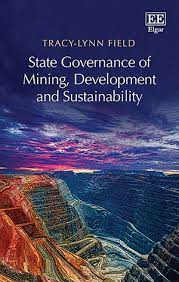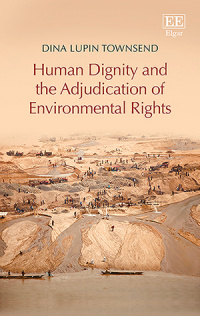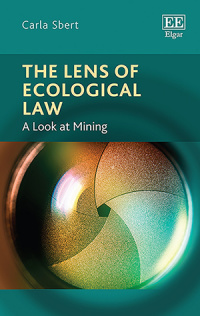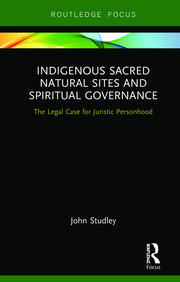
Volume 16/2
Temesgen Solomon Wabelo
Approaches to Rural Land Dispute Resolution Mechanisms in the Ethiopian Rural Land Legislations: Regional States Based Analysis
Approaches to rural land dispute resolution mechanisms may vary across the countries and different countries employ different approaches / modalities to resolve disputes in rural land. The approaches employed could be formal, informal or mixed one. This article has examined the approaches employed to rural land disputes in the rural land legislations of Ethiopia by taking comparative analysis of the four biggest regional states, namely, Oromia, Amhara, SNNPR and Tigray. What makes most of the regional states similar in relation to rural land dispute resolution mechanism is that, most of the regional states rural land legislations send land disputes to informal dispute resolution organs before disputes come to regular courts. In line to this, arbitration council in Amhara region and conflict mediators or elders’ councils in Oromia and SNNPR state are mandated to look into rural land disputes before disputes are taken to Woreda courts. Hence, these organs can assume a fist instance jurisdiction and woreda courts can take the decision of these organs in the form of appeal. It is only Tigray regional state that has established “Rural Land Adjudication Committee” by a separate proclamation that disposes rural land disputes as a first instance jurisdiction. The proclamation has also specified each and every procedure that the committee should have to follow while performing their duties imposed by the proclamation.
Adebayo Majekolagbe
The Evolution of the UNFCCC Environmentally Sound Technology Development and Transfer Framework
Whether to mitigate continued change to the climate or adapt to unmitigable effects of climate change, Environmentally Sound Technologies (ESTs) are considered indispensable in the global climate discourse. Arguably, the transfer of these technologies has been one of the most contested issues under the United Nations Framework Convention on Climate Change (UNFCCC). From a Third World Approaches to International Law (TWAIL) perspective, this article examines the history of the EST development and transfer regime under the UNFCCC, its normative underpinnings, and the socio-legal implications of the various phases. It concludes that while the regime has evolved through five major phases, it has remained latched to its normative substructure. It is further argued that for an equitable and effective EST transfer regime to be achieved, the normative and structural fault lines of the regime must be addressed.
Dipak Zade, Eshwer Kale, Aditya Sood, Sandeep Jadhav and Aditya Shinde
Gaalmukt Dharan, Gaalyukt Shivar (Tank Desiltation) Scheme in Maharashtra, India: Policy Concerns and the Way Forward
In the state of Maharashtra, since the last few years of recurrent drought and low rainfall, there is a strong push for desiltation activities of water reservoirs, mainly the percolation and irrigation tanks. The state administration, corporates with their CSR fund, many NGOs and CBOs are aggressively engaged in desiltation activities through the removal of silt by machines and its application in agriculture land by farmers. To support and promote these efforts, the government of Maharashtra came with a supportive program for desiltation known as Gaalmukt Dharan and Gaalyukt Shivar (GDGS) Yojana. Although the popular media highlights the benefits of the scheme and desiltation work, there is a lack of systematic and scientific study of the desiltation activities and overall critical analysis of the functioning of GDGS. By making detailed interdisciplinary analysis of seven tanks desilted in Marathwada region of Maharashtra, this paper provides the necessary recommendations to modify the existing policy provisions in implementing the GDGS. The paper proposes the urgent need for appropriate and adequate policy instruments to address the overall desiltation activities and need for convergence of GDGS in mainstream watershed development programmes. This is necessary because the increasing desiltation activities of water reservoirs in the near future is certainly going to be an important issue in the state and a concern for environmental sustainability.
Gitanjali Nain Gill
Just Sustainabilities and Sustainable Development Goals in the time of Covid-19
This article inter-relates Julian Agyeman’s Just Sustainabilities paradigm with the Sustainable Development Goals (SDGs). An “embedded lens’ approach is adopted highlighting Agyeman’s essential elements (equity, meeting the needs of present and future generation, justice in terms of recognition, and living within ecosystem limits) alongside those of the UN SDGs (2015 resolution and the targets). Aspects of environmental sustainability within the ‘embedded lens’ are identified. This formulation is achieved by identifying key words of equivalent meaning. The commonality of these essential elements that bind Just Sustainabilities and SDGs are recognised as key integrants. Addressing the wider formulations and interlinkages of these integrants help explore the ‘equity and justice’ aspects in a holistic manner. This promotes the movement from theory to action. Paradoxically, Covid-19 is changing society, not by choice but by necessity, yet simultaneously it creates space to broadcast a fresh message that allows “equity and justice” move centre-stage. The combination of Just Sustainabilities and SDGs constitute an opportunity framework built on “equity and justice”. The relationship between Covid-19 and the “embedded lens” with illustrative focus on environmental goals helps re-orientate and clarify thinking during and subsequently in post Covid-19 “new normal” times.
Olale Philip, Collins Odote and Robert Kibugi
Integrating Marine Spatial Planning in Governing Kenya’s Land-Sea Interface for A Sustainable Blue Economy
Efficacious governance of the land-sea interface is central to the delivery of a sustainable blue economy. Consequently, marine spatial planning (MSP) has emerged as an approach for integrating marine and land-based uses in recognition of the interlinkages between the land and the sea. Such planning is vital in leveraging the potentials of the blue economy as a source of essential ecosystem goods and services for human wellbeing. It is also critical in rationalizing the rising contestation between anthropogenic uses of the land-sea interface resources and the need for environmental conservation and management. This is in line with Goal 14 of the Sustainable Development Goals which require nations to sustainably use the oceans, seas, and marine resources. However, planning laws and policies in Kenya still continue to focus on land at the expense of the marine areas. As a consequence, the land-sea interface remains unplanned and, hence, not sustainably managed. In 2019, Kenya enacted a new Physical and Land Use Planning Act to align with the Constitutional provisions on planning, devolution, and sustainable development. Despite reforming its planning frameworks and constitutional architecture, this paper argues that Kenya’s regulatory regime still continues with the traditional non-integrated planning approach, which is not promotive of sustainable management of the land-sea interface. The paper recommends the inclusion of marine spatial planning in the regulatory framework as an approach to sustainably manage the land-sea interface.
Tuula Honkonen
Tackling Cookstove Emissions in India: Towards an Enabling Policy Environment and More Effective Legal Solution
Household air pollution resulting from cookstove emissions poses a serious threat to human health and well-being and is a significant contributory factor in local and global climate change. Household cookstoves are used on a large scale in India, and is a major contributor to indoor air pollution. India has had national air quality regulation and clean-cooking programs in place for several decades, but the problem of cookstove emissions persists. This paper provides a legal and policy analysis of the current Indian regulatory setting with regard to reducing emissions from household cookstoves. It is characterized by the interplay of a number of different objectives, policy instruments, actors, and levels of governance. The analysis results in the identification of conditions, elements, and tools for more effective and integrated future policy-making and regulation for reducing cookstove emissions. The research results of this paper are presented within the Indian context but have applicability beyond the Indian context as well: people in many developing countries rely on cookstoves for cooking and heating and the resulting emissions form a remarkable environmental, social, and human health problem.
Comments
A Legislative Comment on Cameroon's EIA Regulatory Regime
by Alexander A Ekpombang
Environmental Impact Assessment (EIA) is a planning and management tool employed to ensure that all critical information, to anticipate the future impact on the environment, are considered in the decision-making process in order to avoid the implementation of any activity that may have significant negative impacts on the environment as well as enhance positive impacts. Thus, the implementation of an EIA is pivotal to achieving sustainable development. The foundation stone of EIA was laid in the United States National Environmental Policy Act of 1969 that included requirements for assessing the environmental impacts of a wide range of Federal “actions”, covering projects, policies, plans, and programmes; the aim was to protect the environment. Subsequently, many other countries started introducing EIA, including Canada and Australia in 1973 and 1974 respectively. In Europe, the European Union (EU) Directive 85/EC/337 made EIA for projects, a requirement in all EU member states.
Book review
State Governance of Mining, Development and Sustainability
by Tracy-Lynn Field (Edward Elgar 2019)
Reviewed by Roopa Madhav, PhD Scholar, SOAS, University of London

Human Dignity and the Adjudication of Environmental Rights
by Dina Lupin Townsend (Edward Elgar 2020)
Reviewed by Roopa Madhav, PhD Scholar, SOAS, University of London

The Lens of Ecological Law: A Look at Mining
by Carla Sbert (Edward Elgar 2020)
Reviewed by Roopa Madhav, PhD Scholar, SOAS, University of London


Volume 16/1
G Omedo, K Muigua and R Mulwa
Financing Environmental Management in Kenya’s Extractive Industry: The Place of the Polluter Pays Principle
Kenya’s environmental regulatory framework – the Environmental Management and Coordination (EMCA) Act (Amended) 2015 integrates the Polluter Pays Principle (PPP) as one among six other key principles of Sustainable Development, including public participation, cultural and traditional social principles, international cooperation, inter and intra-generational equity and the precautionary principle. These are to lead to the realization of the constitutionally enshrined ‘right to a clean and healthy environment’. However, apart from this broad statement of intent, there lacks any further proper guidance on how to actualize the PPP’s transformative potential. In this article, qualitative and quantitative methodological approaches are used to analyse the PPP’s application in Kenya for environmental management, especially within the extractives industry. The article finds that the PPP’s implementation continues to be hampered by various factors including state capture, over-regulation, poor economic incentive strategies, lack of awareness and a weakening accountability culture. As a result, the country’s environmental protection regime continues to be driven largely by command and control tools. The research finds that the PPP’s application in environmental management in Kenya has greatly been dented by the waiving of all the environmental impact assessment fees through a Presidential Executive Order in 2016. This has resulted in the immediate reduction of the environmental regulators’ income by over 70 per cent, drastically affecting the ability of the National Environmental Management Authority (NEMA) to undertake its regulatory function effectively. The article finds that as the demands for environmental management in Kenya’s extractives industry continues to rise, the weakening of the PPP regime poses significant challenges to the future of environmental management in Kenya.
Divya Kalathingal
Conservation—A Contested Story: The State and the Kadar Adivasis, India
The Adivasis’ ownership rights over resources are intertwined with the history of managing, conserving and governing the Indian forest by the colonial and post-colonial State. This history has been divided into three different phases in this paper. In the first phase, the forestry was merely understood in terms of managing the forest and enforcement of the colonial rules and regulations. This model was primarily based on the commercial and economic significance of the forest. In the second phase, there was a shift from management to conservation of the forest. In both these stages, rights of the Adivasis over resources were curtailed. In the third phase, the forestry was turned to forest governance and the Adivasi rights started getting recognised in a greater degree compared to the past. In this historical context, this paper explores the impact of State-led forest management in India on the cultural, social and economic life of the local community through an empirical analysis of the Kadar Adivasi community in Kerala, India. Kadar community is one of the severely marginalised groups due to the State’s various development and conservation programmes. This paper unravels the various ways in which post-colonial laws in India have consistently failed to offer any legal protection and eventually marginalised the locality specific knowledge on conservation developed by the indigenous people through their cultural institutions, which have been informed by their lived experience in the forest areas over a long period of time. The paper concludes by delineating the complex interface between conservation practices of the Kadar Adivasis and the State initiated policies and programmes for conserving the forest and its resources.
Makweti Sishekanu
Evolution of Forest Law and Regulation in Zambia from 1973 to 2015: Analysis of the Gap Between Text and Context
The legal and regulatory environment of the forestry sector in Zambia has undergone significant shifts from a socialist approach post-independence to a public participatory approach in the 21st Century. However, the shifts have in themselves carried forward a legal/regulatory gap which this paper focuses on. The paper contends that this regulatory gap has been perpetuated by a lack of attention to the legal and regulatory trilemma of effectiveness, coherence and responsiveness of the legal rules to social context. Therefore, the paper takes a critical legal-empirical examination of the legal/regulatory infrastructure and the implicit ethos around which it has been built from 1973 to 2015. Ultimately, the paper finds that, in protecting and enforcing its values for forestry, the state perpetuates a historical culture of Command-and-Control and consequently, loses focus on the effectiveness, responsiveness and coherence of the legal / regulatory machinery to the targeted socioeconomic context.
Wambua Kituku et. al.
Sectoral Coordination in Kenya’s Municipal Solid Waste Management: A Horizontal Assessment
In 2010, Kenya adopted a constitution that created a two-tier devolved system of government whereby counties assumed significant environmental management responsibilities from national government, including municipal solid waste management (MSWM). Like most developing countries, Kenya is faced with an intractable MSWM challenge, characterized by poor waste handling and treatment as well as ever-growing volumes of waste generation. The institutional setting for MSWM is also characterised by regulatory fragmentation, with multiple regulatory regimes and institutions which are beset by conflicts and overlaps, both at National and county levels. Sectoral coordination is critical in ensuring effective integration of environmental considerations in development processes at the same tier of government, a concept known as horizontal environmental integration (HEI).
This paper analyses the sectoral coordination in MSWM and its contribution to HEI, an area that has attracted limited research. It is contended that despite the National Environmental Management Authority (NEMA) and County authorities having legal mandate to pursue sectoral coordination in MSWM at the respective levels governments, this has not translated into effective horizontal environmental integration of the sector, thus undermining integrated and sustainable approaches to addressing the waste problem in urban areas. Unless the normative and organizational issues as well as gaps in the application of integration tools raised in this paper are addressed within the context of ongoing reforms in MSWM, sustainability of the sector cannot be guaranteed.
Osamuyimen Enabulele
Mitigating the Effects of Environmental Degradation in the Oil Industry: An Assessment of Government Compensation Scheme in Nigeria
While governments around the world have found compensatory damages insufficient for pollution victims, government compensation scheme (GCS) has been designed to substitute and/or complement compensatory damages. We explored the application of this scheme in a socio-geographic context with high incidence of oil pollution and victims of pollution. Specifically, the paper generated qualitative and quantitative data to evaluate how the Niger Delta Development Commission (NDDC) has achieved its mandate as a GCS established to succour the Niger Delta Region (NDR) adversely affected by the environmental degradation induced by oil operations. Our empirical findings showed that while the NDDC performed key functions relevant to the ideals of GCS, it focused primarily on human capital and infrastructural development without addressing the critical environmental concerns of the region. We conclude that an environmental-protection-driven GCS approach would serve the longer-term interests of the NDR people better.
Book review
Water Resource Management and the Law
by Erkki J Hollo, ed., (Edward Elgar 2017)
Reviewed by Amrithnath SB, Assistant Professor, Faculty of Law, University of Delhi

Indigenous Sacred Natural Sites and Spiritual Governance: The Legal Case for Juristic Personhood
by John Studley (Routledge Focus 2019)
Reviewed by Roopa Madhav, PhD Scholar, SOAS, University of London
